|
The World Turned Upside Down
print this story
My name is Iran. Iran Davar Ardalan. Like the country I'm named for, my life has been filled with contradictions.
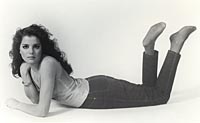 Here's a picture of me in my photo album from March of 1982 posing
like Brooke Shields. "Nothing comes between me and my Calvins" - remember
that? It was taken at a photographer's studio in Boston where I was going
to high school for a time. The next photo was taken two years later in
Tehran. I'm veiled and somber, a young bride in Ayatollah Khomeini's new
revolution. Here's a picture of me in my photo album from March of 1982 posing
like Brooke Shields. "Nothing comes between me and my Calvins" - remember
that? It was taken at a photographer's studio in Boston where I was going
to high school for a time. The next photo was taken two years later in
Tehran. I'm veiled and somber, a young bride in Ayatollah Khomeini's new
revolution.
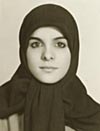 I've spent much of my life traveling back and forth between Iran and
the United States. After college, I worked as a newscaster for Iranian
State television. Today, I'm a journalist in Washington, D.C. I've spent much of my life traveling back and forth between Iran and
the United States. After college, I worked as a newscaster for Iranian
State television. Today, I'm a journalist in Washington, D.C.
1979 was the year my world turned upside down.
A popular uprising forced the Shah to leave Iran. From the large
windows of my family's three-story home near Tehran University, I could
see the Shah's army going through our street as they clashed with student
demonstrators. It was clear that the country was in turmoil. And before
we knew it, we woke up to a revolution.
After nearly 15 years in exile, the Ayatollah Khomeini returned to
Iran. The airport was closed, but an estimated two million people gathered
to greet him.
I was one of those 2 million, curious to see the famous exiled leader
of the clerical movement against the Shah.
Having grown up in a secular country, I felt scared and confused by
the militancy around me. I had gotten some religious education growing up
but I didn't understand this Islamic fervor. I'd go to school only to find
a classmate wearing black - his father - a member of the Shah's cabinet
having just been executed by the infamous hanging judge Khalkhali. The
Shah was a close ally of the United States and my family had close ties to
America.
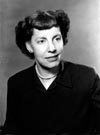 | Helen Jeffreys |
My maternal grandmother, Helen
Jeffreys, was from Boise, Idaho. She met my Iranian grandfather when they
were both students in New York. After they married, Helen converted to
Islam and lived in Iran. In the 1950s she was a public health nurse in
President Truman's Point Four Program and when she visited the United
States, she gave interviews and talks about her family and travels through
distant villages in Iran.
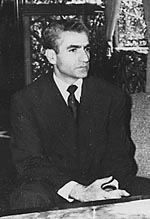 | Mohammed Reza Shah Pahlavi; 1959 - NARA |
But my grandmother and our family weren't attuned to the political
tensions in Iran. In 1953, a coup organized by the CIA restored the Shah
to power. Human Rights organizations documented the use of torture by
Savak (the Shah's secret police) and the execution of political prisoners.
However, the Shah did bring with him decades of modernization, and with
that, rights for women. His reforms ushered Iran into a modern state in
the Middle East.
After the revolution in 1979, the fundamentalist Islamic clerics who
had scorned the Shah's modernization, dismantled everything that had to do
with the previous era. They took over the justice system and instituted a
strict version of Islamic law. This move effectively wiped out all the
legal reforms in the country. They made women wear the veil, brought back
harsh punishments, and denounced everything western.
In protest, Iranian students occupied the American Embassy in Tehran.
They wanted the Shah returned to Tehran to stand trial. The main
spokesperson for the students had attended the same international high
school as I did. When it became obvious that the school would be closed,
I left Iran to finish school in the United States. That first day at
Brookline High, I found myself standing in the courtyard surrounded by
yellow school buses and the American flag at half-staff. Fifty-two
Americans were being held captive at the embassy in Tehran. I just
couldn't see introducing myself in class as Iran, so I registered using my
middle name, Davar. The name means "arbitrator" in Persian. My parents
named me Davar in memory of my great grandfather, Ali Akbar Davar.
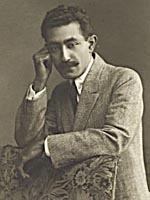 | Ali Akbar Davar |
My great grandfather, Ali
Akbar Davar, was responsible for reforming the laws of Iran in 1927 during
the time of the first Pahlavi Shah. His reforms merged Western and
Islamic law. I've always been aware he was an important figure in Iran's
history. A U.S. diplomat told me recently that Davar was one of his
heroes.
I wondered if his ideas could be useful today when Muslims are trying
to figure out how to reconcile Islam and democracy.
I went to the Library of Congress in Washington D.C. to study Iran's
legal history and to meet Ibrahim Pourhadi, the curator and founder of the
Persian section. Books and newspapers going back to the 1900s tell of an
Iran already searching to accommodate modernity and tradition.
In 1906 Iran had a constitutional revolution. The movement was led by
Iranians of all classes, merchants, clerics and tribal leaders who
demanded a limited monarchy and the creation of an elected parliament.
Microfilms date back to the 1920s, when Iran was ruled by the first
Pahlavi Shah called Reza Khan. There are official notices from the
Justice Ministry and my great grandfather, Davar himself. One is about
changing the laws on punishment.
I've brought an Iranian lawyer named Mehrangiz Kar with me to the
Library. She says before Davar's reforms, punishments came from a mix of
the Quran and ancient tribal customs.
"All punishment was very violent," says Kar. "It was against human
rights. we had stoning, lashing, but after Davar I think it was a big
step towards separation between Church and State."
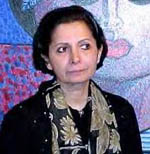 | Mehrangiz Kar |
Kar is in the United States getting medical treatment. She was thrown
in jail in 2000 after criticizing the structure of the government under
the current constitution. Kar says under the clerics, Iran has been set
back a century.
"The 1906 Constitution stated that the Parliament, where laws were
made, was completely independent but in Iran today the Parliament is not
independent and a body known as the Guardian Council can veto all the laws
and demand that they are according to Shariah law. Therefore we have
turned back in time."
My great grandfather was
only 14 when he entered politics. By 24, he was Tehran's Prosecutor
General. He later studied law in Belgium. In 1927, he shut down Iran's
Justice Ministry to revamp it completely. A year later, a new system was
born. It combined European legal code with Islamic jurisprudence. The
new system had local courts, regional ones and a Supreme Court. Judges
decided which cases should be handled by the clerics.
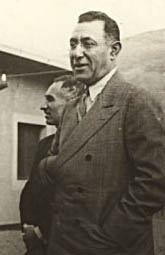 | Ali Akbar Davar |
Davar was not without controversy - his reforms triggered protests.
He was also criticized for promoting the Reza Shah's autocratic rule.
In 1979, all of Davar's reforms were thrown out. But he hasn't been
forgotten.
Radio Farda, the Persian service of Radio Liberty recently reported
that a prominent journalist in Iran had said publicly that the judicial
system was so corrupt that it should be completely shut down and revamped
like the in the time of Davar.
Many voices in Iran are challenging the institution of the Judiciary.
Over seventy years after Davar's reforms, they find themselves once again
struggling to reinterpret Shariah law to make it more compatible to modern
times.
A year after the Islamic revolution, I left Iran. The country
embarrassed me. I had to get away from the rigidity. But it was hard
being Iran Davar Ardalan in Brookline, Mass. I wasn't sure where I fit. So
a year later, I went back to Iran to visit my family and without expecting
it, I got swept up in the Islamic fervor and traditional ways. That's how
I ended up getting married to someone I'd known for only a month. I was
married according to Shari'a law. At my wedding, men and women were in
separate rooms. The cleric reading the vows sat behind a wooden door. My
family and friends back in the United States were stunned at my sudden
change. I wore the veil and prayed five times a day. And I was starting to
doubt whether the role of traditional submissive wife was going to work
for me.
Next: A Legal Comeback, Mangled and Disfigured
| 


